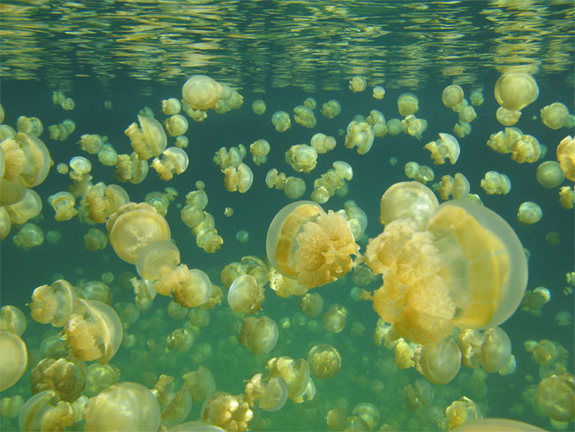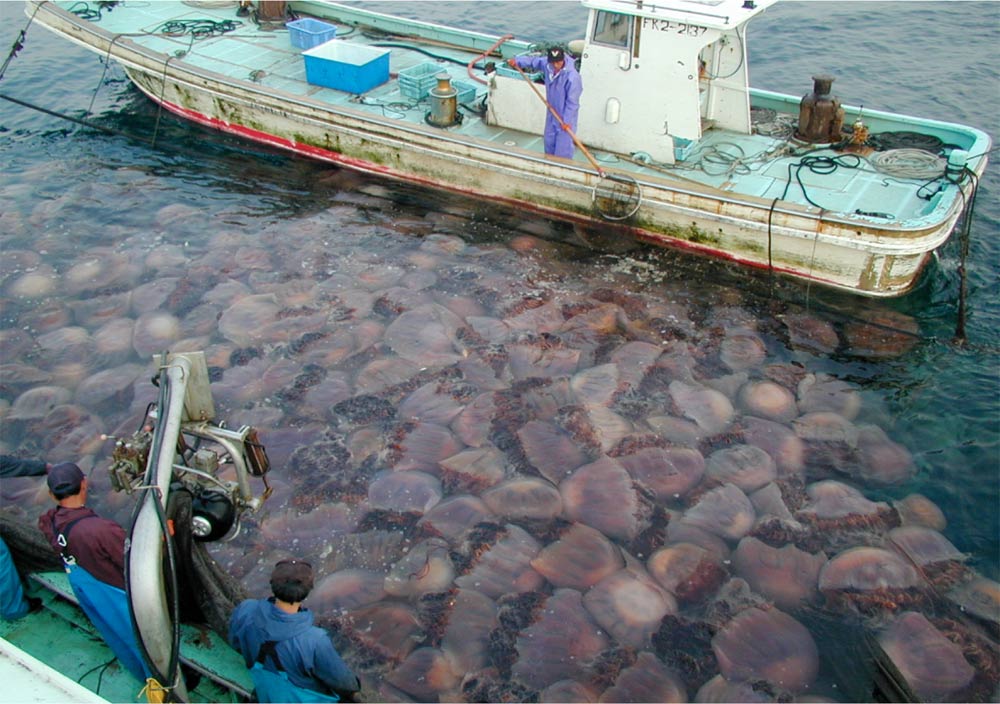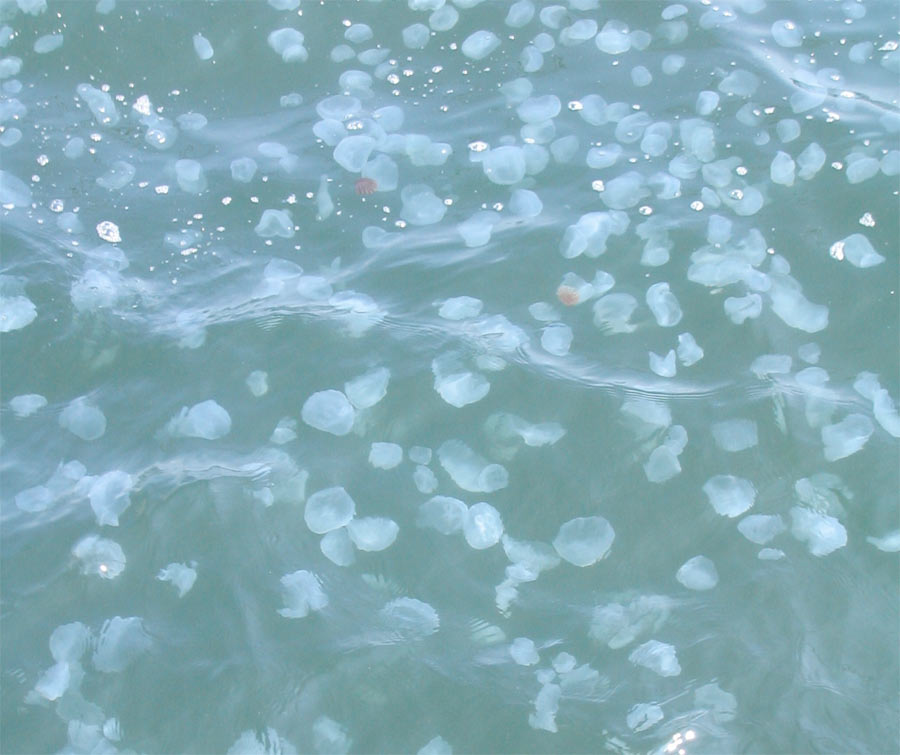Gelatinous Menace? Jellyfish on Boom-Bust Cycle Worldwide

Mastigias jellyfish flood Jellyfish Lake, a marine lake in Palau, an island nation in the Pacific Ocean. Here, researchers found that pulsating jellyfish stir up the oceans with as much vigor as tides and winds, making them major players in ocean mixing.
(Image credit: K.Katija/J.Dabiri.)Though some reports suggest jellyfish are taking over the world’s oceans, long-term records of these gelatinous animals fail to show a global increase in jellyfish blooms likely caused by pollution, warming, coastal development and other human influences.
While the analysis of a team of researchers who have pulled together records of jellyfish presence going back to the 19th century don't support a rising gelatinous menace, the team did find a surprise: roughly 20-year cycles in the abundanceof jellies.
Part of a recent rise-and-fall cycle may have prompted the perception of a global swell in jellyfish, according to the international team, whose researchers are part of the Global Jellyfish Group. They point specifically to the rising phase that began in 1993 and peaked in 2004.
Blamed for stinging swimmers, clogging fishing nets, overrunning ecosystems and wreaking other havoc, jellyfish blooms — when these animals appear in massive numbers — have caught the attention of the media and scientists alike. A number of research papers have suggested that not only are blooms increasing on a global scale, but humans are likely responsible, because humans alter the oceans in ways that favor jellyfish. [See Stunning Photos of Jellyfish Blooms]

However, others have maintained information on jellyfish populations just isn't sufficient to draw such conclusions.
This most recent study drew upon 37 datasets, each of which included at least 10 years of records of jellyfish presence in an area.
Even though the records don't evenly represent the ocean — the majority came from the Northern Hemisphere, particularly in the Atlantic Ocean and the Mediterranean Sea — they include all available annual measurements, including datasets used to support work indicating increases in jellyfish, the authors write in a study published online today (Dec. 31) in the journal Proceedings of the National Academy of Sciences.
Sign up for the Live Science daily newsletter now
Get the world’s most fascinating discoveries delivered straight to your inbox.
Language has added to the challenge. In common use, the term jellyfish lumps together organisms that can be quite different from one another. For the purposes of this study, the researchers included records for true jellies, the type most familiar to beachgoers; their relatives the hydrozoans; comb jellies, which use tiny hairs, called cilia, to swim; and another group of free-swimming invertebrates called salps.
From around 1940 to present, the records show the 20-year rising and falling cycles. Prior to that, researchers saw signs of oscillations in regions where data were available; however, this isn't enough information to draw conclusions about global patterns, said lead researcher Rob Condon, a marine scientist at Dauphin Island Sea Laboratory in Alabama.
Multidecadal cycles are not uncommon in nature, whether in organisms' growth patterns and populations, or physical phenomena, such as the oxygen concentration of the oceans.

While the jellyfish's 20-year cycle most likely has a basis in nature, "there's also the issue of how humans have potentially impacted the sort of natural variability that is present in many marine systems," Condon said. "And I think that is the wider part of the question that can't be answered yet."
From 1970 onward, a weak trend toward increasing jellyfish showed up. However, this trend may be an artifact of the 20-year cycles, the authors write.
Scientists need at least 10 more years of jellyfish records to reach any solid conclusions about the worldwide trajectory of jellyfish populations, Condon said, adding that more data from the Southern Hemisphere and the open ocean are also needed.
The current analysis doesn't rule out the possibility of a global increase, he told LiveScience, adding that increases are most likely isolated to certain regions.
One region stood out in their analysis: the Sea of Japan. Here, records going back to the 1920s of the giant Nomura jellies — which grow up to 6.7 feet (2 meters) in diameter, and have been known to clog fishing nets and power-plant intakes — showed an increased tendency in recent years toward extremely high numbers.
Follow LiveScience on Twitter@livescience. We're also on Facebook & Google+.











